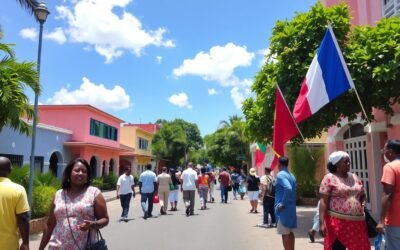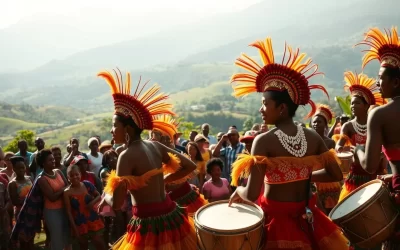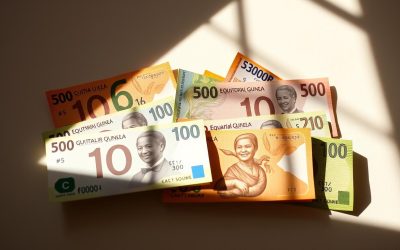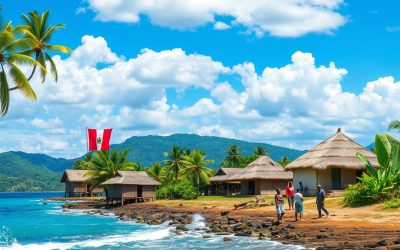✓ Accommodations✓ Flights✓ Rental Cars✓ Tours & Activities
You’re about to discover the optimal times to visit one of Africa’s hidden gems – a nation with diverse landscapes ranging from pristine beaches to lush rainforests.
Planning your trip around the country’s distinct weather patterns is crucial for maximizing your experience in this Spanish-speaking nation. Equatorial Guinea’s unique geography creates diverse microclimates that affect when you should visit different regions.
The dry season, which runs from June to August and December to February, is considered the best time to visit. During this period, the weather is generally sunny and dry, with little to no rainfall, making it ideal for enjoying sunny beach days and clear visibility for wildlife spotting.
Understanding Equatorial Guinea’s Climate
Equatorial Guinea’s varied climate is influenced by its geography, resulting in distinct weather patterns across the country. The country’s climate is shaped by its location near the equator and its diverse geography, which includes islands, mainland regions, and varying elevations.
Geographic Diversity and Weather Patterns
The geography of Equatorial Guinea plays a significant role in determining its climate. The country consists of the mainland region, Río Muni, and several islands, including Bioko and Annobón. Each region experiences different weather patterns due to its unique geography. For instance, Bioko Island, where the capital Malabo is located, has a distinct dry season from mid-November to February.
The mainland region of Río Muni has two dry seasons: from December to mid-February and again from July to September. Annobón Island follows a different pattern, with its dry season running from June to October. This diversity in weather patterns across regions allows for year-round travel opportunities by moving between different areas.
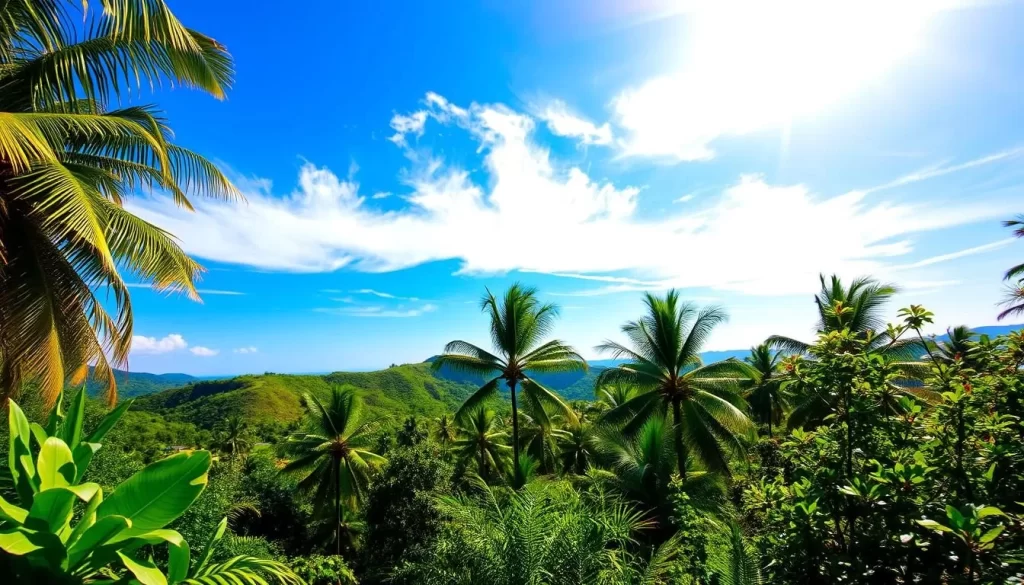
Rainy vs. Dry Seasons Across Regions
The timing of rainy and dry seasons in Equatorial Guinea varies significantly between the mainland and island regions. Understanding these seasonal variations is crucial for planning a trip. For example, the southern coastal areas of Río Muni receive more rainfall than inland areas, with the Río Muni estuary near Gabon being one of the wettest regions.
| Region | Dry Season | Rainy Season |
|---|---|---|
| Bioko Island | Mid-November to February | March to November |
| Río Muni Mainland | December to mid-February, July to September | March to June, October to November |
| Annobón Island | June to October | November to May |
By understanding the dry season and rainy periods for each region, you can plan your trip to Equatorial Guinea during the best time for your travel preferences.
Equatorial Guinea: Best Months for a Weather-Savvy Trip
To make the most of your Equatorial Guinea adventure, it’s crucial to choose the right time to visit. The country’s diverse climate means that the best travel months vary depending on your itinerary and preferences.
December to February: Ideal for Island and Mainland Exploration
The months from December to February are considered ideal for exploring both the islands and the mainland of Equatorial Guinea. During this period, the weather is generally dry and pleasant, making it perfect for outdoor activities such as hiking, wildlife viewing, and beach relaxation. The dry conditions on Bioko Island and in Rio Muni allow for easier access to remote areas and enhance the overall travel experience.
The dry season also brings clearer skies, which are ideal for photography and observing the natural beauty of the region. Whether you’re exploring the lush forests, visiting local markets, or simply enjoying the beaches, this period offers a great balance of comfort and adventure.
June to August: Perfect for Continental Adventures
For those interested in continental adventures, the months from June to August are particularly appealing. Although this period falls within the dry season on the mainland, it’s an excellent time for exploring the continental regions of Equatorial Guinea. The weather is generally warm and dry, making it suitable for activities like trekking, visiting national parks, and experiencing the local culture.
This period is also a good time for nature enthusiasts to visit, as the dry conditions make wildlife more concentrated around water sources, enhancing viewing opportunities. Additionally, the dry weather facilitates travel across the mainland, allowing visitors to explore the diverse landscapes and ecosystems.
Shoulder Seasons: Pros and Cons
The shoulder seasons (March-May and September-November) in Equatorial Guinea present a mixed bag of weather conditions that can vary significantly by region. These transitional periods offer both challenges and unique opportunities for travelers willing to navigate occasional rainfall for fewer crowds and lush landscapes.
- During these periods, you’ll witness Equatorial Guinea’s nature at its most vibrant, with waterfalls at full flow and forests displaying intense greenery.
- Photography enthusiasts may find these periods particularly rewarding, as the dramatic cloud formations and rain-washed landscapes create stunning visual opportunities.
- Accommodation prices tend to be lower during these transitional months, offering better value for budget-conscious travelers.
While the shoulder seasons come with the possibility of sudden downpours, having flexible itineraries can help you make the most of your trip. This period is ideal for travelers looking for a more serene experience and are prepared for variable weather conditions.
Regional Weather Guide: When to Visit Where
As you plan your trip to Equatorial Guinea, it’s crucial to understand the regional weather patterns to ensure a memorable journey. The country’s diverse geography means that weather conditions vary significantly across different regions.
Bioko Island and Malabo
Bioko Island, home to the capital city Malabo, experiences a wet season from March to October, with the most significant rainfall occurring between July and September. The dry season, from November to February, is the best time to visit Malabo and enjoy the island’s beautiful beaches and vibrant culture. During this period, you can explore the island’s lush landscapes and enjoy outdoor activities without the hindrance of heavy rainfall.
Weather Highlights for Bioko Island:
- Average temperature ranges from 18°C to 32°C (64°F to 90°F)
- High humidity throughout the year
- Dry season is ideal for exploring the island’s natural beauty
Rio Muni Mainland and Bata
The Rio Muni mainland, including the city of Bata, has a similar climate to Bioko Island but with more pronounced dry and wet seasons. The dry season, from December to February, is the best time to visit Bata and explore the mainland’s natural attractions. The wet season, which runs from March to November, can make some roads impassable, so it’s essential to plan accordingly.
| Season | Weather Conditions | Best For |
|---|---|---|
| Dry Season (Dec-Feb) | Less rainfall, clearer skies | Exploring Bata, outdoor activities |
| Wet Season (Mar-Nov) | Heavy rainfall, lush landscapes | Landscape viewing, cultural experiences |
Annobón and Other Islands
Annobón Island, located 480km southwest of the mainland, has its own distinct seasonal pattern, with a dry season from June to October. This period is ideal for visiting the island, enjoying its golden beaches, and exploring its volcanic landscapes. The island is also known for its unique cultural heritage and is home to an isolated population.

When planning your visit to these islands, keep in mind that the remote nature of the locations can mean that weather impacts transportation. Being flexible with your travel dates can help ensure a smoother journey.
Weather-Based Activities and Attractions
As you plan your trip to Equatorial Guinea, understanding the weather-based activities and attractions can enhance your travel experience. The country’s diverse climate and geography offer a range of experiences tailored to different weather conditions.
Dry Season Adventures: Beaches and Wildlife
During the dry season, Equatorial Guinea transforms into an ideal destination for beachgoers and wildlife enthusiasts. You can enjoy the pristine beaches of Bioko Island or explore the lush jungles and national parks of the mainland. The dry conditions make it perfect for wildlife viewing, including spotting monkeys, birds, and other unique species in their natural habitats.
The dry season is also an excellent time for water activities such as snorkeling, diving, and fishing. The calm seas around Annobón and other islands offer perfect conditions for exploring the underwater world.
| Activity | Location | Best Time |
|---|---|---|
| Beach Relaxation | Bioko Island | Dry Season |
| Wildlife Viewing | Mainland National Parks | Dry Season |
| Snorkeling/Diving | Annobón and other islands | Dry Season |
Rainy Season Experiences: Lush Landscapes and Cultural Immersion
The rainy season brings a different charm to Equatorial Guinea, transforming the country into a lush, verdant paradise. The heavy downpours and high humidity levels result in full rivers, waterfalls, and vibrant greenery, making it an ideal time for nature lovers and photographers.
During the rainy season, you can experience the authentic local culture as fewer tourists visit, allowing for deeper interactions with the Equatoguinean people. Indoor activities such as visiting museums, markets, and cultural centers in Malabo and Bata become more appealing.
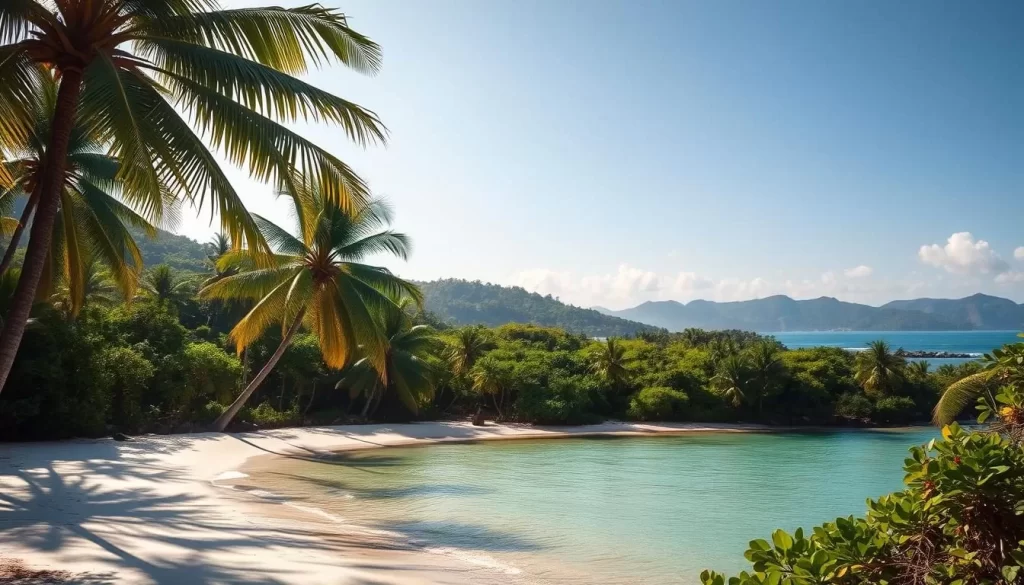
The rainy season also offers unique photo opportunities, with dramatic skies, misty mountains, and the spectacular peak of waterfalls like the Eoli River falls near Ureca. Additionally, the reduced number of visitors often translates to more personalized service at hotels and restaurants, as well as potential discounts on accommodations throughout the country.
Seasonal Highlights and Festivals
From vibrant cultural celebrations to breathtaking natural phenomena, Equatorial Guinea offers a wide range of experiences that are worth timing your visit around. The country’s diverse ecosystems and rich cultural heritage create a unique blend of seasonal highlights and festivals.
Annual Celebrations Worth Planning Around
Equatorial Guinea’s cultural calendar is filled with exciting events that reflect its history and traditions. While specific festivals may vary, the country’s independence celebrations and other cultural gatherings offer a glimpse into its rich history. You can experience the vibrant culture firsthand by attending one of these events.
Natural Phenomena and Wildlife Viewing Opportunities
The country’s diverse ecosystems create numerous opportunities for wildlife viewing and experiencing natural phenomena. During the dry season, sea turtles emerge on the beaches of Ureca to lay their eggs, offering a rare and unforgettable experience. 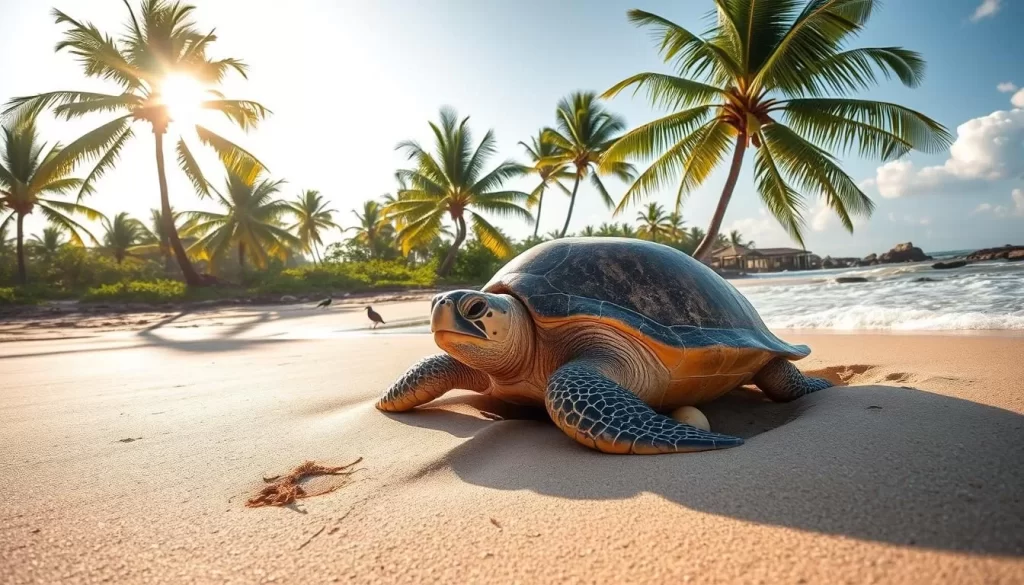
Monte Alén National Park is another highlight, with its diverse wildlife including chimpanzees, forest elephants, and the critically endangered mountain gorilla. The park’s forest trails and campsites provide an immersive experience in the heart of Equatorial Guinea’s lush jungles.
| Season | Wildlife Viewing Opportunity | Location |
|---|---|---|
| Dry Season | Sea Turtle Nesting | Ureca Beaches |
| Dry Periods | Chimpanzees, Forest Elephants, Mountain Gorillas | Monte Alén National Park |
| Transitional Seasons | Bird Watching (Migratory and Resident Species) | Various Locations |
| End of Rainy Seasons | Eoli River Waterfalls | Near Ureca |
By timing your visit to coincide with these natural phenomena and cultural events, you can experience the best of what Equatorial Guinea has to offer, from its beaches to its rich history and diverse wildlife.
Practical Travel Tips for Different Seasons
To make the most of your time travel in Equatorial Guinea, understanding the practical aspects of traveling during different seasons is essential. The country’s diverse climate means that preparation is key to a successful and enjoyable trip.
What to Pack for Equatorial Guinea’s Climate
Packing the right clothing and gear is crucial when traveling to Equatorial Guinea. During the dry season, lightweight, breathable clothing is recommended, while the wet season requires waterproof gear and sturdy footwear. Don’t forget to include essentials like sunscreen, insect repellent, and a hat to protect yourself from the sun.
Regardless of the season, it’s a good idea to choose best travel options that suit the climate. For instance, during the wet season, it’s advisable to pack clothing that can get wet or dirty without causing concern.
Health Considerations and Weather Precautions
When traveling to Equatorial Guinea, it’s essential to take health considerations into account. The rainy season can bring an increase in mosquitoes and other insects, making insect repellent a must. Additionally, staying hydrated and protecting yourself from the sun are crucial during the dry season.
Consulting your doctor or a travel clinic before your trip to discuss any necessary vaccinations or medications is a prudent step. This ensures you’re prepared for any health challenges you might face during your travel.
Transportation Challenges During Wet Seasons
During the wet seasons, transportation options in Equatorial Guinea can be limited. Unpaved roads become muddy and sometimes impassable after heavy rains, making it essential to plan ahead. Arranging for private transportation or renting a 4×4 vehicle with high clearance can help navigate potentially flooded roads.
It’s also advisable to avoid driving at night due to poor road conditions and inadequate lighting. If possible, consider working with local tour operators who understand the seasonal road conditions and can provide appropriate vehicles and experienced drivers.
Accommodation Recommendations by Season
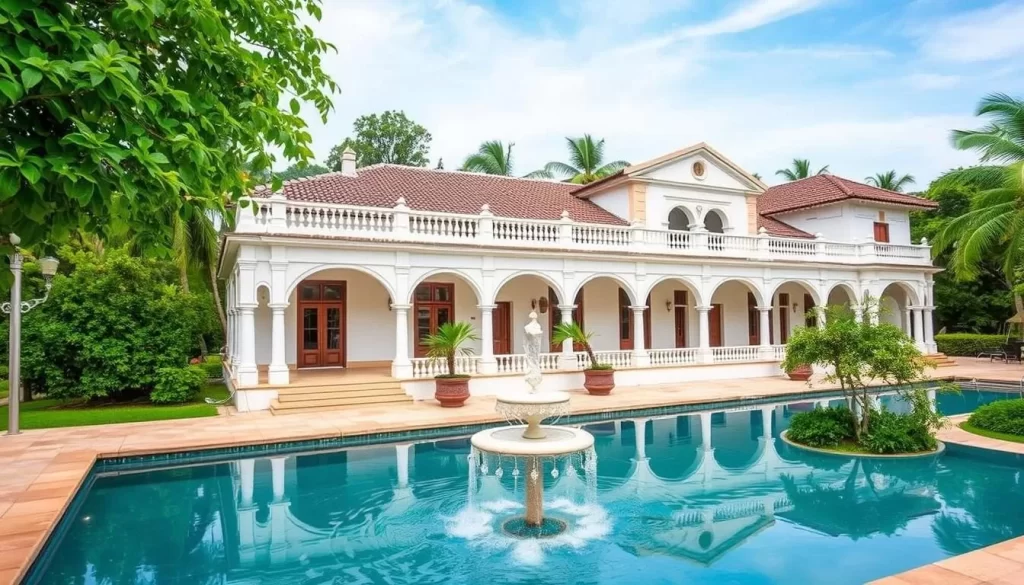
When planning your trip to Equatorial Guinea, choosing the right accommodation is crucial for a comfortable and enjoyable experience. The country’s diverse regions offer various lodging options, each with its unique charm and advantages, depending on the season.
Where to Stay in Malabo and Bata
In Malabo and Bata, you’ll find a range of accommodations that blend colonial architecture with modern comforts. These cities offer a home away from home, with amenities that cater to different tastes and budgets. During the dry season, you’re likely to enjoy a more relaxed stay, while the rainy season might require more planning to ensure your accommodation is prepared for potential weather-related challenges.
Island and Remote Lodging Options
For those seeking a more secluded experience, islands like Annobón and Corisco offer idyllic beaches and opportunities for snorkeling and diving. Annobón Island, with its ancient cemetery and pristine waters, is a paradise for those looking to escape the mainland’s hustle and bustle. You can stay in small guesthouses that become particularly busy during December. Remote lodging near Ureca provides access to black sand beaches and turtle watching, though it’s best visited during dry seasons. Wildlife enthusiasts can arrange overnight stays at forest campsites in Monte Alen National Park, enjoying the night under the stars.
Considering the seasonal accessibility of these remote accommodations is key, as some may be cut off during heavy rains, while others might offer special rates to attract visitors during the wet season.
Conclusion: Making the Most of Your Weather-Savvy Trip
Planning a trip to Equatorial Guinea requires more than just booking flights; it involves understanding the country’s climate to make the most of your journey. By considering the weather patterns, you can transform your experience from challenging to extraordinary in this rarely visited Central African nation.
The best time to visit depends on your preferences. December to February is ideal for exploring both the continental region and Bioko Island, while June to August is perfect for mainland adventures. The capital city, Malabo, offers a fascinating glimpse into the country’s colonial past during dry periods.
Equatorial Guinea offers a unique cultural experience, with its Spanish heritage setting it apart in Africa. Whether you’re drawn to pristine beaches, dense forests, or the country’s complex history, choosing the best time year for your interests will ensure a memorable journey.
The above is subject to change.
Check back often to TRAVEL.COM for the latest travel tips and deals.

